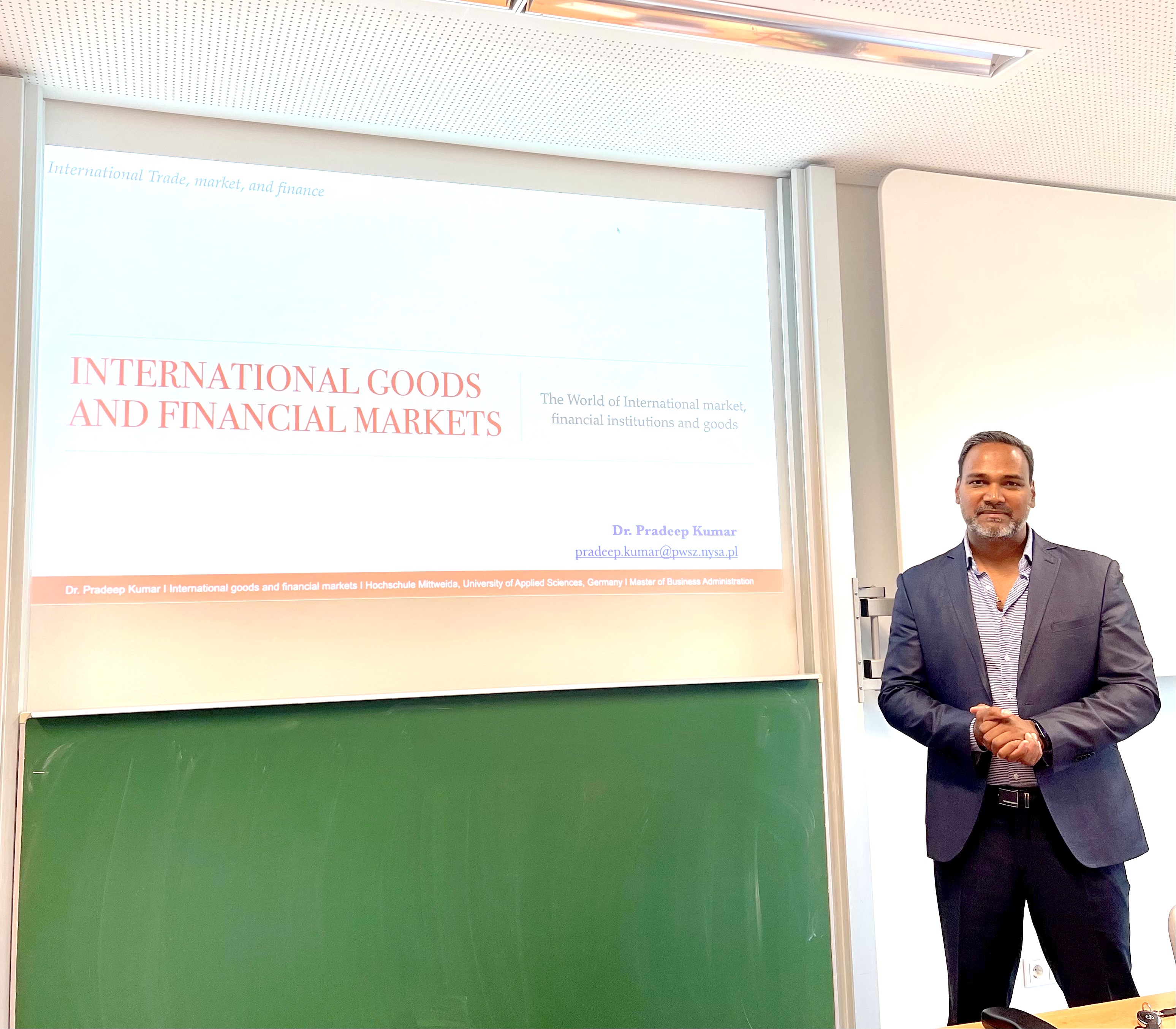Filologia angielska
- 2023-06-07 11:07:00
- Wydarzenia
International Goods and Financial Markets
"Strengthening Academic Ties with our Partner University, Hochschule Mittweida, University of Applied Sciences, Germany"
Our cooperation with Hochschule Mittweida, University of Applied Sciences, Germany is getting closer and stronger in terms of academic & research development. Recently, Dr. Pradeep Kumar, Faculty of Modern Languages, University of Applied Sciences in Nysa (Państwowa Akademia Nauk Stosowanych w Nysie) was invited to develop and deliver a course for MBA Students "International Goods and Financial Markets".
The faculty of Industrial Engineering and Economics have invited Dr. Pradeep Kumar to deliver entire course for MBA Students, who is specialised in International Business and Economic at the Faculty of Modern Languages, University of Applied Sciences in Nysa (Państwowa Akademia Nauk Stosowanych w Nysie). The syllabus and entire Program has been designed for 32 hrs to be taught for MBA (Master in Business Administration); and delivered in both methods - virtual meetings as well as physical meetings.
The very first Virtual lectures were conducted by Dr. Kumar on 05.05.2023 and the last is scheduled on 16.06.2023. The physical meetings were conducted between May 30- June 04, 2023 at Hochschule Mittweida, University of Applied Sciences, Germany.
About the subject: International Goods and Financial Markets
The title of the subject itself explain about the content of the syllabus “International goods and financial markets”. As world is more globalised and goods are easily able to move from local to global and global to local markets, the local demands of any country has become the main factors of the mobility of goods, in and out. International market is always functioning based on the supply and demand models.
The commodity composition of trade is determined primarily by ‘availability’. Availability means an elastic supply. Trade takes place only those goods which are ‘not available at home’. It means:
- A country will import those goods which are not available in the absolute sense, for example diamonds;
- Export those goods which are available in quantities greater than domestic demand.
By targeting different markets with availability and specific needs of the good’s demands, companies are using different marketing strategies including:
- Analysis of the wider business environment. More specifically: the political / legal, economic, social / cultural, and technological factors operating in the external world.
- Identification and analysis of target markets for new products
- Sales goals in terms of volume and revenue
- The marketing budget
- Elements of their marketing mix, and their timing: the term ‘marketing mix’ is another name for the well known four ‘P’s: product, price, place (ie distribution channel) and promotion.
Once goods mobility takes place between two countries: the foreign exchange market is introduced to the students. The market in which different currencies are bought and sold for one another. For example, dollars are traded for marks, marks for francs, francs for yen or yens for dollars.
Thus the national currencies of all countries are the stock-in trade of the foreign exchange market. As such, it is the largest market to be found around the world which functions in every country. And the principal participants in the foreign exchange market are banks, foreign exchange dealers, brokers, firms and central bank. The methods of foreign payments, financial institutions such as IMF, World Bank, ECB, National banks are introduced and discussed.
Galeria











